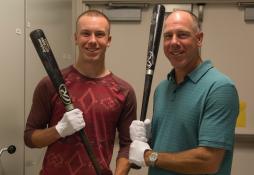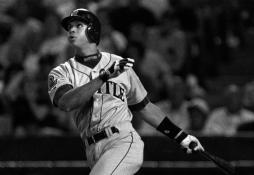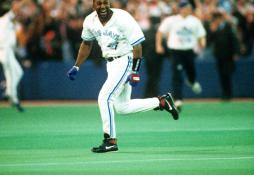- Home
- Our Stories
- #CardCorner: 1985 Topps Alvin Davis
#CardCorner: 1985 Topps Alvin Davis
The Seattle Mariners were virtually a self-contained all-star team in the early and mid-1990s, with future Hall of Famers Ken Griffey Jr., Randy Johnson and Edgar Martinez joining a host of other top players in the lineup.
But less than a decade earlier, the Mariners were still a struggling expansion team. Then, Mr. Mariner arrived. And Alvin Davis changed baseball in Seattle.
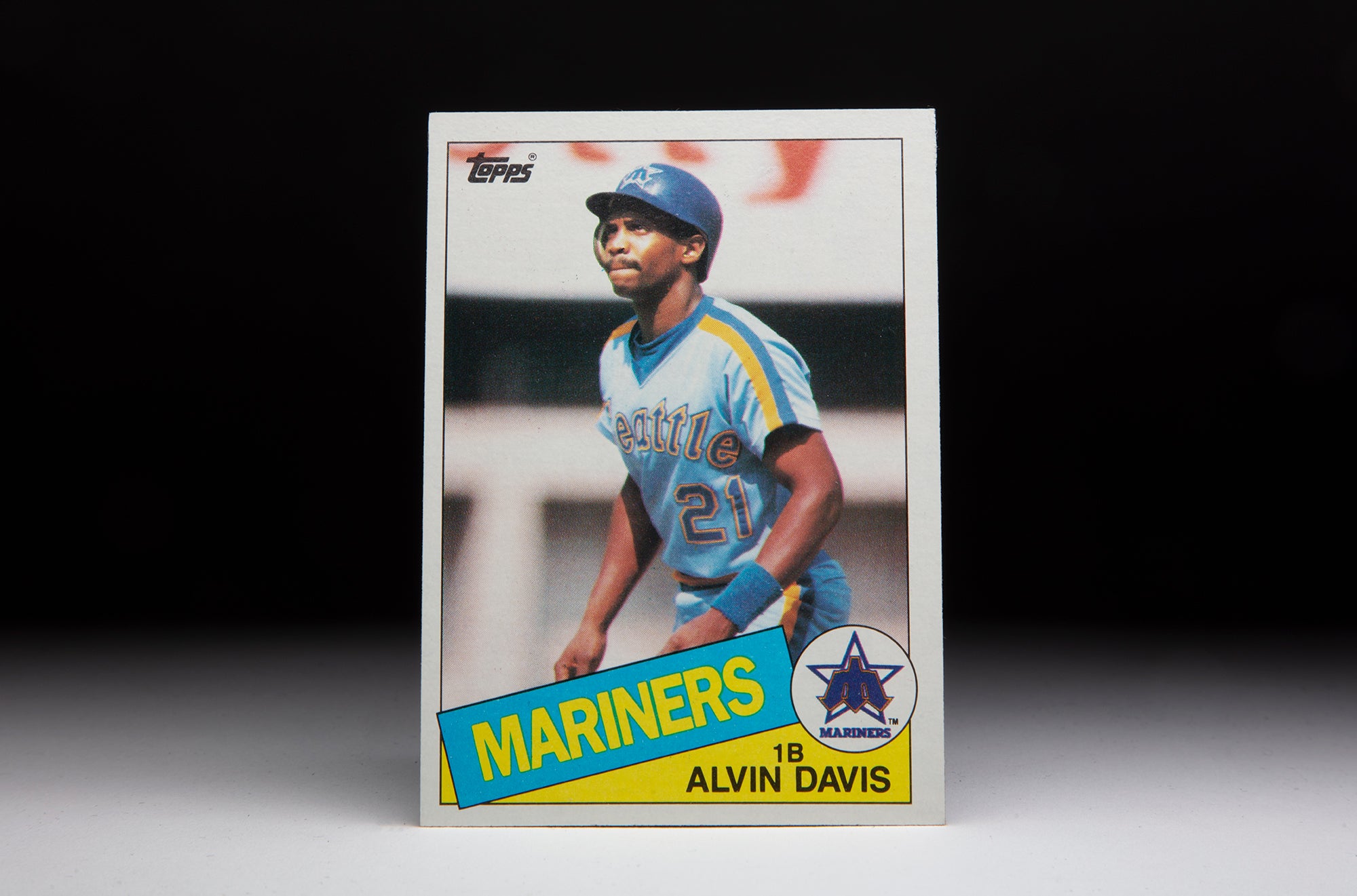
Born Sept. 9, 1960, in Riverside, Calif., Davis grew up in a close-knit family with three brothers – one of whom played college basketball and another who received a football scholarship to UCLA. Davis, meanwhile, learned at the feet of baseball royalty from an early age: Bobby Bonds, who also grew up in Riverside, was a family friend who babysat Davis.
“It was a family thing with my family and the Bonds family,” Davis told the Lafayette (Ind.) Journal and Courier during a high school baseball tournament. “I have two older brothers, Mel and Mike, and they were always playing ball with Bobby. The Bonds lived right down the block from us, and it seemed like we were one big family.”
Davis’ father passed away in 1970, leaving Davis’ mother – Mylie – to raise the family.
“My mom was my inspiration,” Davis told the New York Daily News during his rookie season with the Mariners. “She saw to it that we all grew up in the right frame of mind, with the right values. She instilled in me that I could succeed in baseball once I set my sights on it. But she also insisted that I go to college first.”
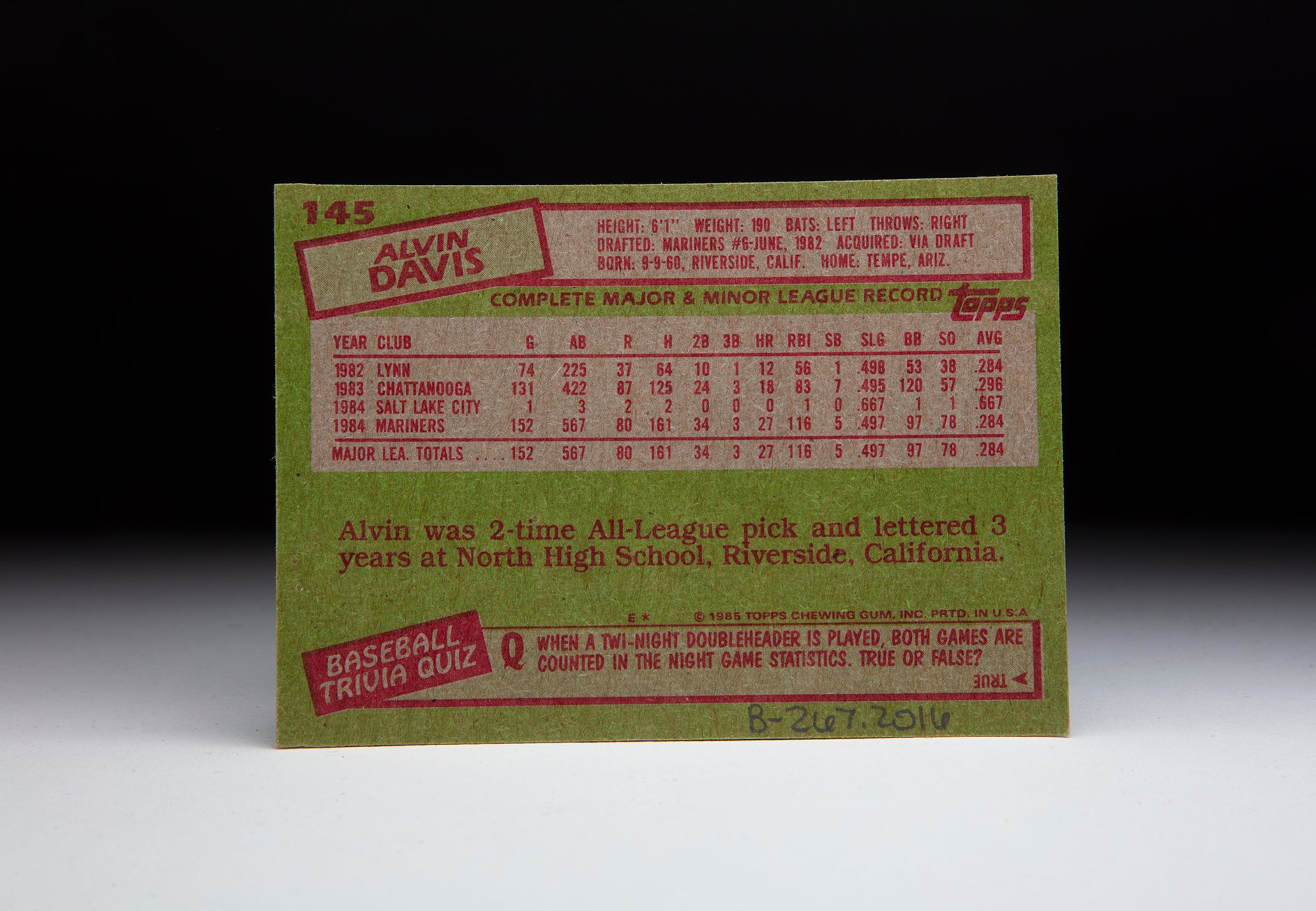
Playing high school ball for John W. North High School in Riverside, Davis hit close to .400 during his senior year and was selected in the eighth round of the 1978 MLB Draft by the Giants. But Davis opted instead for a scholarship at Arizona State University, a perennial powerhouse that had won its fourth NCAA National Championship in 1977.
By 1980, Davis was playing regularly for the Sun Devils, and Davis was named to the first-team All-Pac-10 squad as a junior in 1981, helping Arizona State win another national title on a team that featured soon-to-be big leaguers like Donnie Hill and Kevin Romine as well as future NFL quarterback Mike Pagel. Davis was selected by the Athletics in the sixth round of the 1981 MLB Draft but returned to college to fulfill a promise to his mother to get his degree.
After earning more honors as a senior and completing his studies, Davis was taken in the sixth round of the 1982 MLB Draft by the Mariners. He was sent to the Lynn Sailors of the Double-A Eastern League, where he hit .284 with a .419 on-base percentage, clubbing 12 homers and driving in 56 runs in 74 games. He returned to Double-A in 1983 with the Chattanooga Lookouts, where he hit .296 with an eye-catching .443 on-base percentage (on the strength of 120 walks) with 18 homers and 83 RBI in 131 games.
The 6-foot-1, 195-pound Davis was thought to lack big league skills on the bases and in the field – but his bat was proving to be MLB caliber.
“The secret to good hitting is really very simple: Seeing the ball,” Mariners hitting coach Ben Hines, who also coached Davis at Arizona State, told the New York Daily News. “And Alvin happens to see it better than most. With that edge, he never looks bad swinging.”

Davis began the 1984 season with Triple-A Salt Lake City after impressing the Mariners in Spring Training. But after just one game – where he had two hits and scored three runs – he was brought to Seattle when first baseman Ken Phelps broke his finger after being hit by a Jerry Augustine pitch against the Brewers on April 6. Davis made his big league debut five days later and hit a three-run homer off Boston’s Dennis Eckersley in his second at-bat.
From there, Davis’ rookie season became a national story as Seattle had finally produced its first potential star in its eighth season in the American League.
“In this game, people come along every now and then who show you they were born to play this game,” Mariners manager Del Crandall told the Associated Press. “Alvin Davis looks like one of those people.”
After six games, Davis was hitting .333 – and his average didn’t drop below the .300 line again until late June. He finished the year batting .286 with 27 homers and 116 RBI (fourth-best in the AL) to go along with 97 walks. He was named to the AL All-Star team, finished 12th in the league Most Valuable Player voting and was a runaway winner in the AL Rookie of the Year balloting.
“Hollywood couldn’t come up with a better script than the Alvin Davis story,” Mariners president Chuck Armstrong told the AP.
But in the midst of all that success, Davis suffered an injury that may have affected his entire career. On May 12 against the Yankees, a bad-hop ground ball struck him in the face, breaking his nose. Davis missed four games but his vision seemed to be affected in 1985 when he saw a noticeable power drop, hitting .287 but with 18 homers and 78 RBI.
In the spring of 1986, an examination revealed that his left eye was substantially weaker than his right and he was diagnosed with astigmatism. He wore glasses for five games before switching to a contact lens and kept his average in the .290-range for much of the year before falling back to .271, 18 homers and 72 RBI after a September slump.
“He has as good a (batting) stroke as I’ve seen in quite a while,” future Hall of Fame manager Dick Williams, who took over the Mariners’ job in May, told the Associated Press. “He reminds me of Rod Carew except that he utilizes more power.”
Following the 1986 season, Davis was diagnosed with a cornea condition and received a new contact lens that brought his vision back to near normal. He bettered many of his rookie season number in 1987, hitting .295 with 37 doubles, 29 homers and 100 RBI as the Mariners won 78 games, the most in team history. However, the team became embroiled in a national talking point when some Mariners executives became concerned that chapel services were interfering with the day-to-day activities of the club. Davis was among the most faithful of the Mariners and never wavered from his beliefs.
“A Christian gets pennant fever just like anyone else,” Davis told the AP. “We’re not really different, we’re just forgiven.”

Optimism was high for the team in 1988 but a slow start cost Williams his job and Seattle finished in last place in the AL West. Davis hit .295 with 18 homers, 69 RBI and 95 walks – good for a .412 on-base percentage.
The Mariners signed Davis to a three-year deal worth a reported $4.5 million prior to the 1989 season. And with his future secure, Davis watched as the franchise’s destiny arrived that year when Ken Griffey Jr. made his big league debut on Opening Day.
The player now known as “Mr. Mariner” would provide guidance to the young center fielder who would become the face of the game in a few short seasons.
“I’m not a guy who yells and screams, but when people aren’t doing things correctly I’m going to be somebody who points it out,” Davis told the Kitsap Sun. “I also approach it from the perspective that I’m not always correct. And I don’t always do things right.”
Davis had what would be his last great season in 1989, hitting .305 with 30 doubles, 21 home runs, 95 RBI and 101 walks against only 49 strikeouts. He posted a .424 on-base percentage and .920 OPS, both second in the AL behind Wade Boggs and Fred McGriff, respectively.
But with Davis seemingly at the peak of his career, the Mariners signed free agent first baseman Pete O’Brien to a four-year deal worth a reported $7.6 million following the season. Davis was moved to the DH spot and took a while to feel comfortable in the role.
Davis’ numbers were in line with his previous average seasons (17 homers, 68 RBI, .283 batting average, .387 on-base percentage) and he became the first player in franchise history to reach the 1,000-hit mark with a single off Milwaukee’s Teddy Higuera on July 22. But the future appeared to belong to the younger Mariners.
In 1991, Davis hit .221 with 12 homers and 69 RBI in 145 games. Seattle won 83 games to top the .500 mark for the first time, giving Davis a taste of winning in the final year of his contract. With O’Brien having two years left on his deal and a young Tino Martinez ready for everyday action, the Mariners let Davis test the free agent marked.
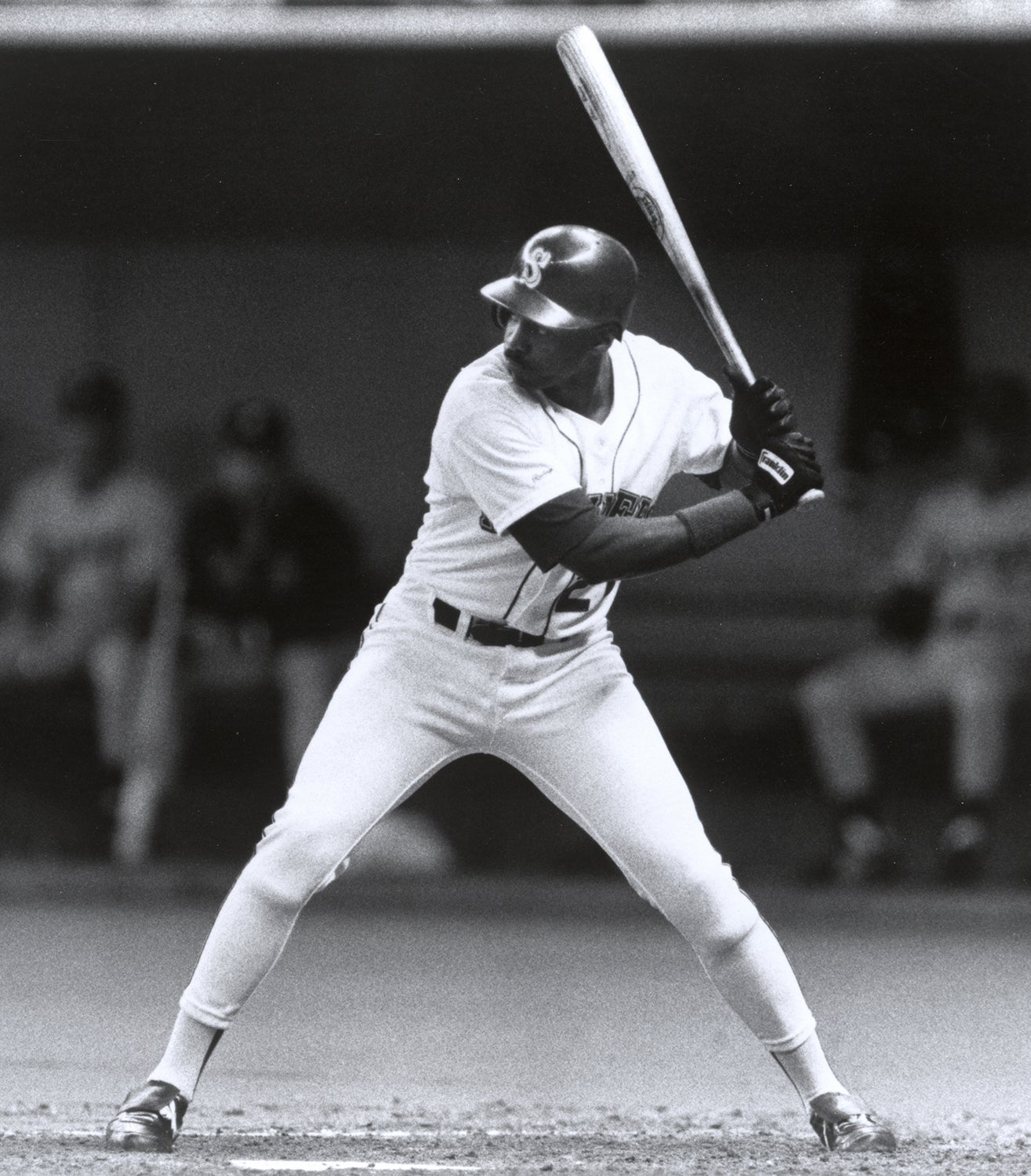
On Valentine’s Day 1992, Davis signed a one-year deal with the Angels worth $800,000 that would pay him about twice that if he hit certain performance marks. The contract also included a team option year for 1993.
“I was excited about the free agent process but disappointed there wasn’t more interest,” Davis told the Los Angeles Times. “I was born and raised in Riverside. I used to go to Anaheim Stadium to watch Nolan Ryan and Frank Tanana pitch. The Angels are my hometown team. This is a dream come true, and it’s especially exciting since I’m only 31 and have a chance to be around for a while.”
But after hitting .250 with no homers in 40 games, the Angels released Davis to give him the opportunity to sign with the Kintetsu Buffaloes of the Japanese Pacific League. He played in 40 games for the Buffaloes that summer, hitting .275 with five home runs.
With that, his career on the field came to an end. In nine big league seasons, Davis hit .280 with a .380 on-base percentage, 160 homers (which ranked first in Seattle history at the time of his retirement) and 683 RBI.
On June 14, 1997, Davis became the first member inducted into the Mariners Hall of Fame.
“When I got here, he was the big man in this town,” Griffey Jr. told the Olympian of Olympia, Wash., when Davis was inducted. “He was the Mariners before all of us got here.”
Craig Muder is the director of communications for the National Baseball Hall of Fame and Museum


